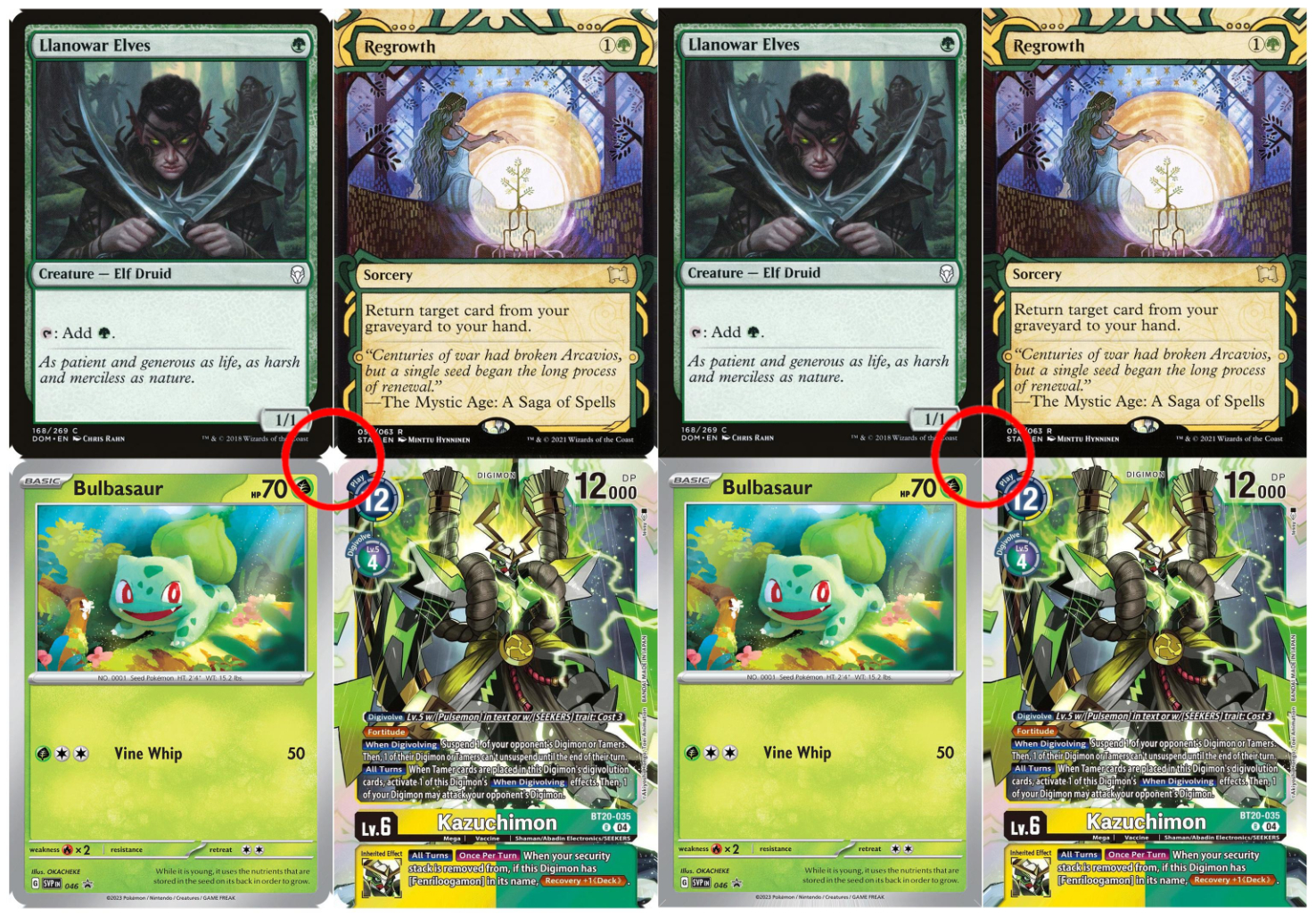create_pdf.py
create_pdf.py is a CLI tool that layouts your card images into a PDF with registration marks that can be cut out with the appropriate cutting template in cutting_templates/.

Basic Usage
Create a Python virtual environment
python -m venv venvActivate the Python virtual environment
. venv/bin/activate.\venv\Scripts\Activate.ps1Note
You may see a security error. If you do, run the following, then try activating the environment again.
Set-ExecutionPolicy -ExecutionPolicy RemoteSigned -Scope ProcessInstall Python packages
pip install -r requirements.txtPrepare images
Put your front images in the game/front/ folder.
Put your back image in the game/back/ folder.
Run the script
python create_pdf.pyGet your PDF at game/output/game.pdf.
Plugins
Plugins streamline the process for acquiring card images for various games.
The MTG plugin is currently available, which can automatically acquire card images based on a decklist. Various decklist formats are supported, including MTGA, MTGO, Archidekt, Deckstats, Moxfield, and Scryfall. To learn more, see here.
Double-Sided Cards
To create double-sided cards, put front images in the game/front/ folder and back images in the game/double_sided/ folder. The filenames must match for each pair.
Corner Artifacts
If your card images have rounded corners, they may be missing print bleed in the PDF. You may have seen white Xs appear in your PDF; these are artifacts from rounded corners. Because of the missing print bleed, when these cards are cut, they may have a sliver of white on the corners.

The --extend_corners option can ameliorate this issue. You may need to experiment with the value but I recommend starting with 10
python create_pdf.py --extend_corners 10CLI Options
Usage: create_pdf.py [OPTIONS]
Options:
--front_dir_path TEXT The path to the directory containing the
card fronts. [default: game/front]
--back_dir_path TEXT The path to the directory containing one or
no card backs. [default: game/back]
--double_sided_dir_path TEXT The path to the directory containing card
backs for double-sided cards. [default:
game/double_sided]
--output_path TEXT The desired path to the output PDF.
[default: game/output/game.pdf]
--output_images Create images instead of a PDF.
--card_size [standard|japanese|poker|poker_half|bridge|domino]
The desired card size. [default: standard]
--paper_size [letter|tabloid|a4|a3|archb]
The desired paper size. [default: letter]
--only_fronts Only use the card fronts, exclude the card
backs.
--crop FLOAT RANGE Crop a percentage of the outer portion of
front and double-sided images, useful for
existing print bleed. [0<=x<=100]
--extend_corners INTEGER RANGE Reduce artifacts produced by rounded corners
in card images. [default: 0; x>=0]
--ppi INTEGER RANGE Pixels per inch (PPI) when creating PDF.
[default: 300; x>=0]
--quality INTEGER RANGE File compression. A higher value corresponds
to better quality and larger file size.
[default: 75; 0<=x<=100]
--load_offset Apply saved offsets. See `offset_pdf.py` for
more information.
--name TEXT Label each page of the PDF with a name.
--help Show this message and exit.Examples
Create poker-sized cards with A4 sized paper.
python create_pdf.py --card_size poker --paper_size a4Crop the borders of the front and double-sided images. This option is useful if your images already have print bleed.
python create_pdf.py --crop 6.5Remove the rounded corners from the PDF and load the saved offset from offset_pdf.py.
python create_pdf.py --extend_corners 10 --load_offsetProduce a 600 pixels per inch (PPI) file with minimal compression.
python create_pdf.py --ppi 600 --quality 100